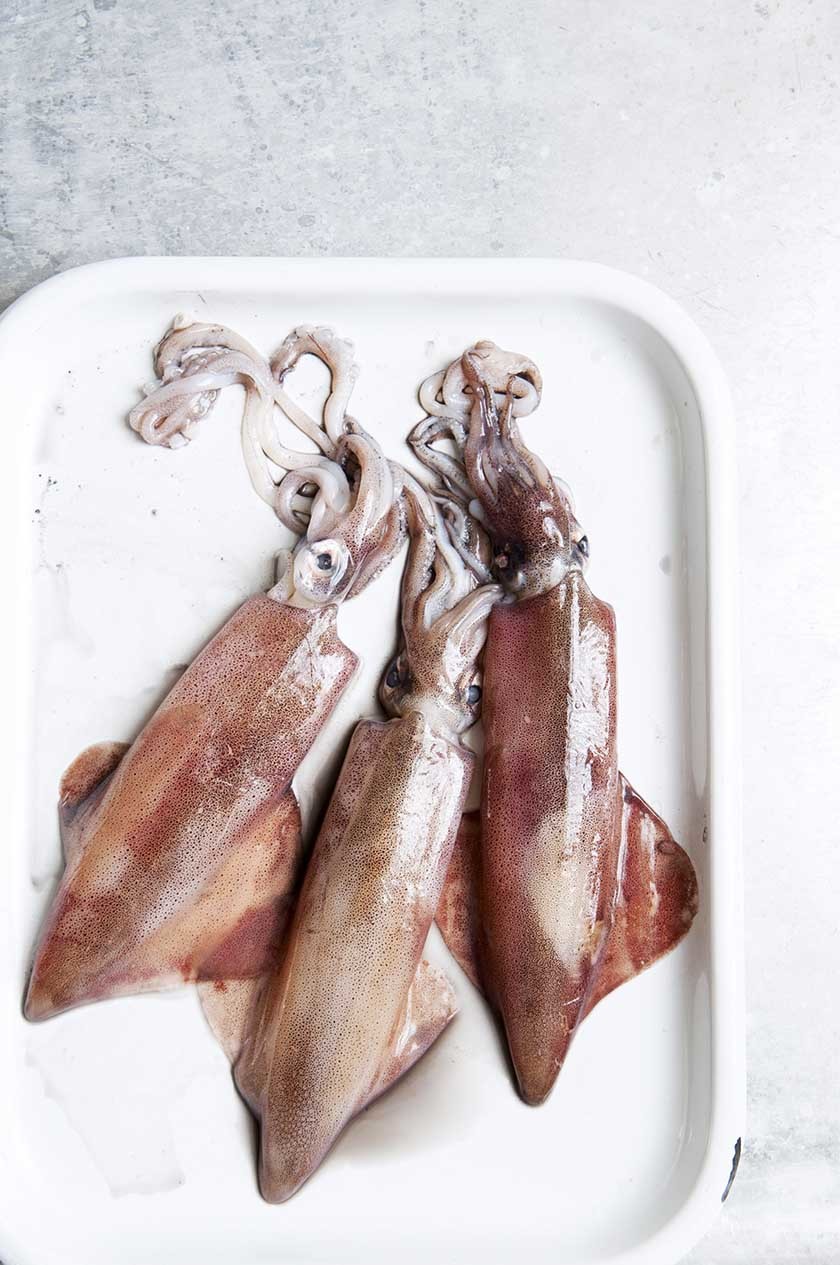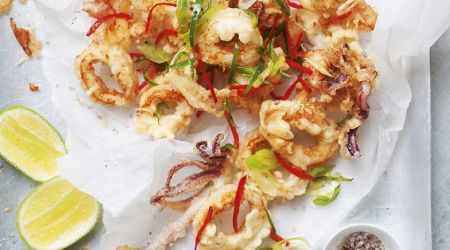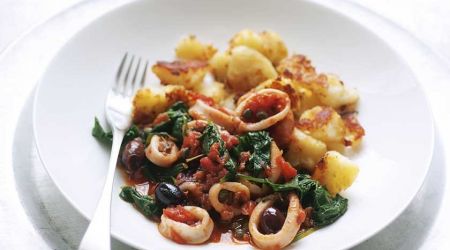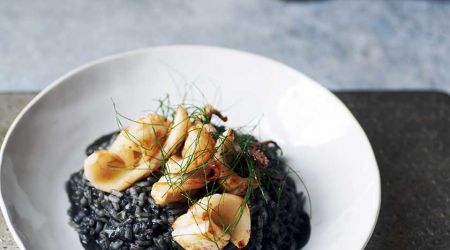Squid
Surprisingly fuss-free to prepare, squid makes a wonderfully versatile ingredient in everything from Mediterranean stews to Russian fish soup, says Clarissa Hyman
Anyone who feels a little squeamish at the thought of Loligo vulgaris will not have been helped by the episode of Blue Planet II in which a transfixed nation was united in horror at the sight of giant cannibalistic squid battling each other in the murky depths of the Pacific ocean. And also trying to eat the camera lens with a frightful combination of powerful beaks and undulating tentacles. Rather puts you off your fritto misto.
Luckily, the Humboldt squid is unlikely to
be found in your local supermarket, and
although the calamari rings alone would be
enough to feed an army (assuming, of
course, they were even edible), the
disturbing sight on the counter would
doubtless result in hysterics in the fish
queue and, quite possibly, a stampede.
Squid range widely in size from teenies to huge specimens. However, they are all cephalopods, meaning ‘head-footed’, referring to the way in which the two long tentacles and eight ‘arms’ sprout from the head. They also have two arrow-like fins. Once, squid had an external shell but this has been reduced to an internal ‘quill’, which is removed before cooking. Its soft, oval body is covered in a speckled purple and black membrane. This latter provides camouflage, but squid are clever critters and can secrete a blue-black ink to confuse any predator crossing their path: the German name is, appropriately, Tintenfisch.
Using their large fins to steer, squid siphon water through their ‘funnels’ to create a kind of jet propulsion, which they can direct backwards or forwards. They can change colour to match their surroundings, and are able to switch direction instantly. As chef Nathan Outlaw notes, they are the ultimate hunting machine.
Although it may seem daunting at first, squid are actually much easier to prepare than they might at first seem. The trick is to pull the head out of the body with all the innards attached (less gory than it sounds), cut the tentacles just above the eyes and discard the rest of the guts. Remove the wings by pulling them from the body with your fingers and scrape away the skin with a knife. You are now left with just the body. Cut it down one side so you have a flat piece of flesh and remove the plastic-looking ‘quill’. Alternatively, get the fishmonger to do it all for you.
The size of a squid usually determines the cooking method. The smaller the squid, the quicker the cooking; the larger the squid, the longer in the pot. One of the most straightforward ways of cooking squid is to stew it in a richly flavoured sauce of tomatoes, red wine and garlic given a Mediterranean flavour, perhaps, with capers and black olives. Very small squid, called chipirones by the Spanish and lulinhas in Portuguese, can be simmered gently in onion, garlic, wine, bacon and chillies until they take on a pleasing violet hue.
The body sac, or mantle, makes a natural tubular container for a stuffing after it is cleaned out and the head removed. Once filled it needs to be stewed gently until tender. Patience is the key ingredient. Most recipes involve cooking in a tomato sauce, although there is a pleasing simplicity to just using olive oil. Excellent stuffings can be made with onion, garlic, chorizo, lemon juice and cooked rice, or with ham, paprika, white wine, tomatoes and breadcrumbs. Sometimes the tentacles and arms are chopped up and included in the stuffing.
In Poland, squid once practically unknown, has become a popular substitute for tripe, now difficult to obtain. It is often cooked in the traditional style for tripe with cabbage, root vegetables, paprika and marjoram. A Russian fish soup includes boiled squid strips along with beetroots, cabbage, potatoes and sour cream.
Squid sometimes has a reputation for being tough and chewy, but this usually happens only when it is overcooked. In a hot pan, particularly, it cooks extremely quickly, which preserves its taste and succulence. Sophie Grigson suggests marinating the squid in lime juice, sliced chilli and, surprisingly but effectively, ripe kiwi fruit. The squid is griddled or grilled, and the kiwi helps tenderise the flesh, changing texture rather than flavour to give as she describes, ‘a unique, almost velvety, feel in the mouth’. Whole tubes, flattened out into a sheet and scored, taste excellent barbecued as well, a method commonly found in Chinese cooking.
Crisp calamares a la Romana are sliced into rings, battered and fried. Mitch Tonks suggests a simple but excellent coating of milk and flour spiced with black peppercorns, Sichuan peppercorns and bird’s-eye chillies. A tempura batter, made with flour, cornflour, iced water and egg à la Rick Stein, also suits squid extremely well. Raw squid is popular as a component of sushi; in fact, the Japanese market absorbs about half of the world’s catch.
Squid is also a good, sustainable choice, but when buying check it is milky white with no signs of pinkness, which indicates age. Unusually, frozen squid is often a good purchase as the freezing process can help tenderise the flesh.
The Japanese name for squid is ika, and one of the most intriguing ways of preparing it is found in Hokkaido, the northernmost of Japan’s main islands. Here, it is cut into long, vermicelli-like strips and served raw with grated ginger and soy sauce as if it were noodles.
So instead of going to sleep with the
Humboldt horrors, I am counting the rings
of my next fritto misto di mare. As long,
that is, as it’s stopped wriggling.

Recipes
Get Premium access to all the latest content online
Subscribe and view full print editions online... Subscribe




